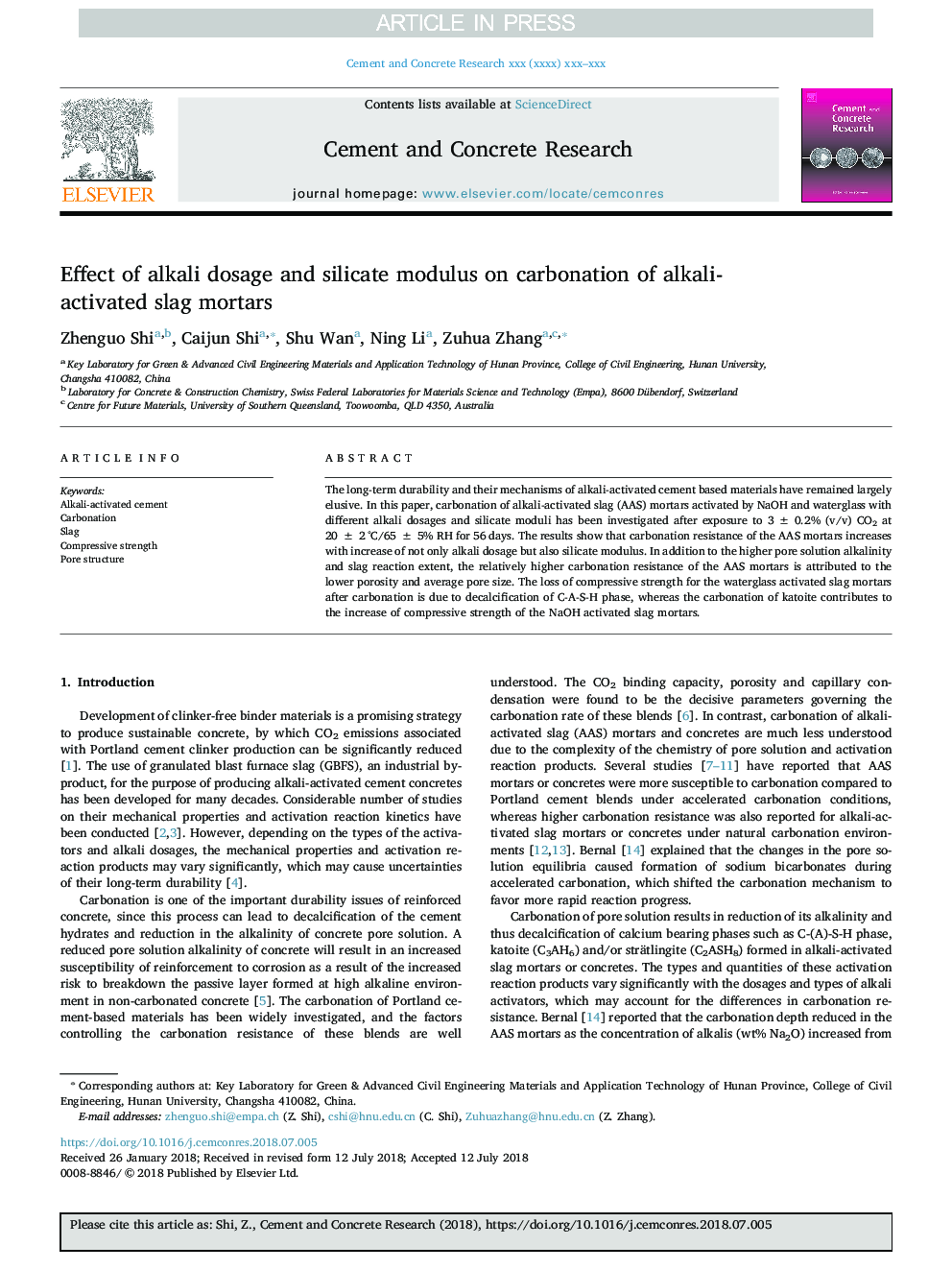| Article ID | Journal | Published Year | Pages | File Type |
|---|---|---|---|---|
| 10155350 | Cement and Concrete Research | 2018 | 10 Pages |
Abstract
The long-term durability and their mechanisms of alkali-activated cement based materials have remained largely elusive. In this paper, carbonation of alkali-activated slag (AAS) mortars activated by NaOH and waterglass with different alkali dosages and silicate moduli has been investigated after exposure to 3â¯Â±â¯0.2% (v/v) CO2 at 20â¯Â±â¯2â¯Â°C/65â¯Â±â¯5% RH for 56â¯days. The results show that carbonation resistance of the AAS mortars increases with increase of not only alkali dosage but also silicate modulus. In addition to the higher pore solution alkalinity and slag reaction extent, the relatively higher carbonation resistance of the AAS mortars is attributed to the lower porosity and average pore size. The loss of compressive strength for the waterglass activated slag mortars after carbonation is due to decalcification of C-A-S-H phase, whereas the carbonation of katoite contributes to the increase of compressive strength of the NaOH activated slag mortars.
Related Topics
Physical Sciences and Engineering
Engineering
Industrial and Manufacturing Engineering
Authors
Zhenguo Shi, Caijun Shi, Shu Wan, Ning Li, Zuhua Zhang,
